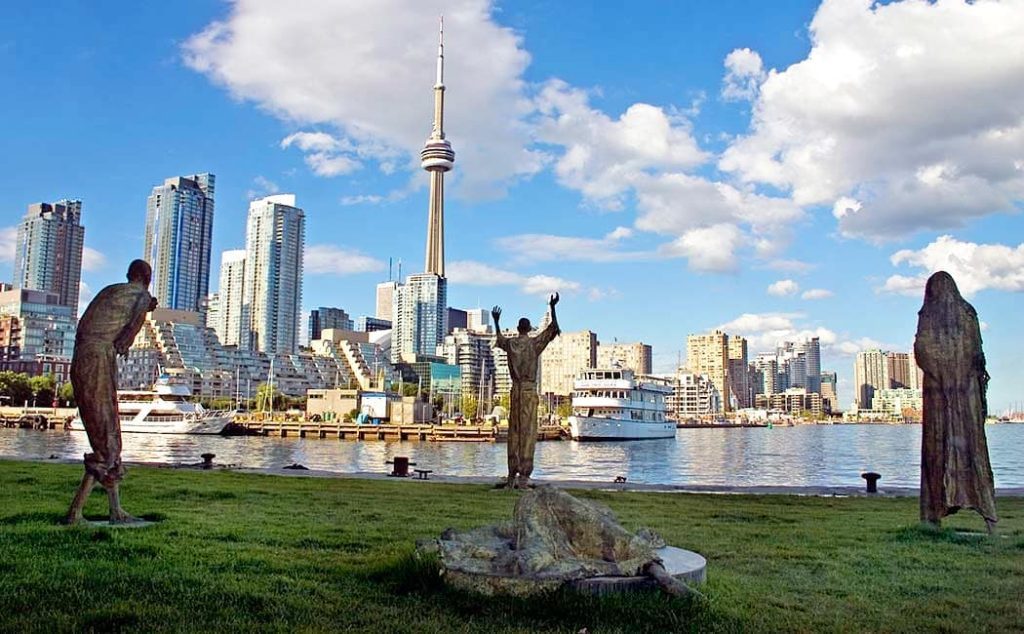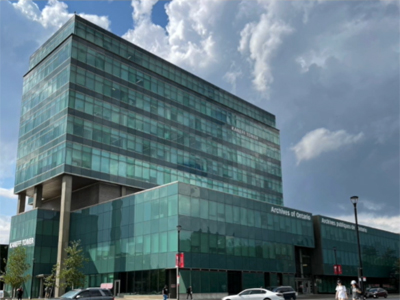Thursday, June 13, 2024.
Begin your Conference experience with a full day exploring the deep Irish connections in Toronto.
Door-to-door return transportation and a bag lunch are included in the cost of this tour. Be sure to wear comfortable shoes as this tour does require considerable walking.
The Irish Heritage Tour bus leaves the Conference hotel at 9:30 am. Your tour coordinator will travel with you throughout the day, and additional guides from the Royal Ontario Museum ROMWalks program will be on hand to help you make the most of your stops. We’ll return you to the hotel at 5:00 pm.
Toronto has been home to people of Irish descent since the city’s beginnings as the Town of York in 1793. Through the 18th and 19th centuries the Irish, both Protestant and Catholic, have been one of Toronto’s – and Ontario’s largest ethnic groups. On this tour, you’ll visit eight of the city’s Irish heritage sites.
Ireland Park
Ireland Park on Toronto’s waterfront, opened in 2007, commemorates the 1847 arrival of some 38,000 Irish Famine refugees who inundated Toronto – a city with a population of just 20,000 at the time. Many of the refugees moved on to other parts of Ontario. See sculptor Rowan Gillespie’s “The Arrival” that echoes his “Departure” sculpture on Dublin’s quayside, look for your ancestor’s name engraved on the commemorative limestone pillars and hear the story of the research behind the project.

Grasett Park
Situated at the corner of Adelaide Street West and Widmer Street, Grasett Park is a public space that commemorates Dr. George Robert Grasett, who gave his life to care for Irish migrants fleeing the Great Famine in 1847.
Corktown
Corktown was the colloquial name for this historic neighbourhood near King and Parliament streets that in the 19th century was dominated by the working class Irish. A walking tour led by ROMWalks guides will include Little Trinity Anglican Church, Enoch Turner Schoolhouse and the Distillery District.
Gooderham and Worts Distillery

The Gooderham and Wort’s Distillery opened in Corktown in 1837, and the mills and breweries along the Don River and the shoreline of Lake Ontario were the major employers of the Irish who settled in this area.
Lunch break: At 12:00 pm board the tour bus to travel to Little Trinity Church, where you’ll have a chance to relax and recharge with a tasty bag lunch.
St. Paul’s Basilica
The present Italian Renaissance style church was built in 1889. The parish, established in 1822, was the first Roman Catholic parish in Upper Canada between Kingston and Windsor. Serving a largely Irish population, many early parishioners and fever victims were buried in the adjacent churchyard.
Cabbagetown
Cabbagetown, which acquired its name in the 19th century because of the cabbages and other vegetables grown by the thrifty Irish immigrants who settled in the area, is now one of Toronto’s most sought-after addresses and an enclave of restored Victorian homes of every size and shape.
Toronto Necropolis Cemetery
The picturesque Necropolis Cemetery was the second non-sectarian burial ground in Toronto. Opened in 1850, it provided the final resting place for many Corktown and Cabbagetown Irish and other Torontonians from all walks of life.
St. James Cemetery
St. James Cemetery was the second Anglican cemetery in Toronto, originally located on the grounds of the St. James’ Anglican Church (later Cathedral) grounds. Dr. George Robert Grasett was buried here in July 1847 along with 281 of the famine victims who died from typhus, and a monument was erected here to commemorate them in 2007.



